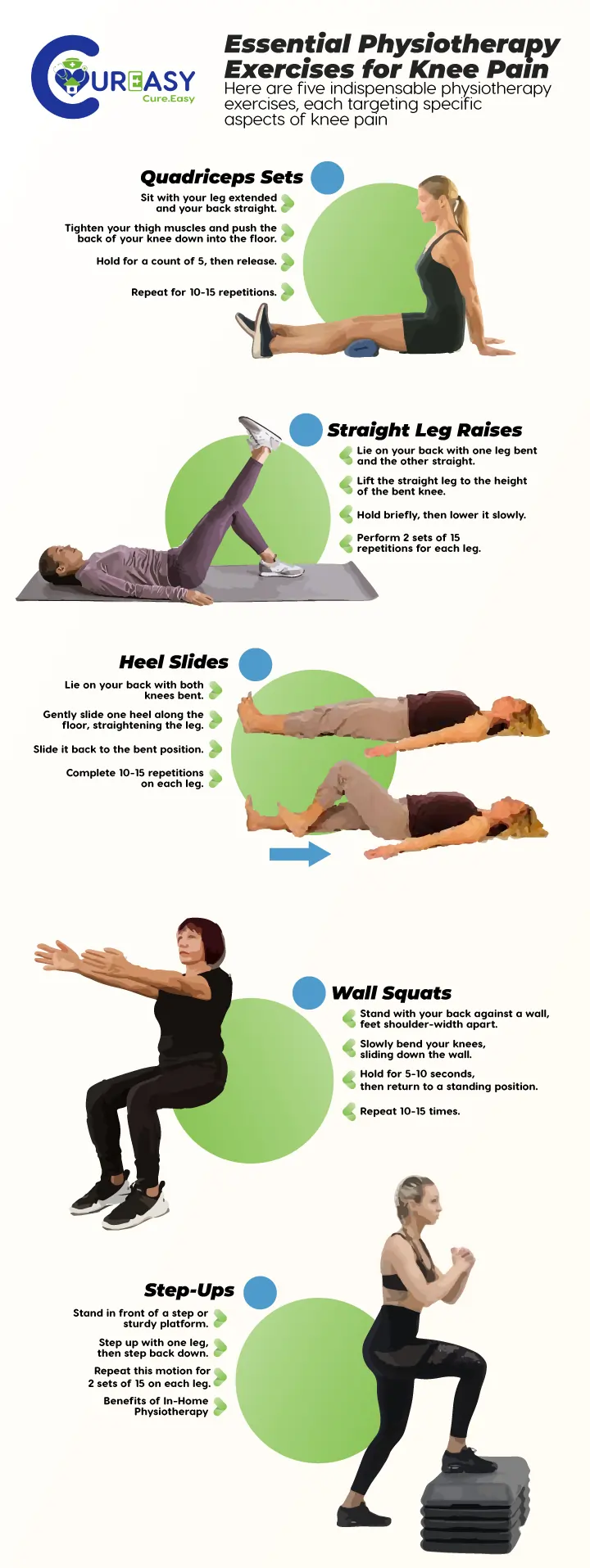Archives

What Causes Knee Pain?
Osteoarthritis (OA):
Osteoarthritis is a degenerative joint disease and one of the primary culprits behind knee pain. It’s a condition that progresses gradually, involving the deterioration of the protective cartilage within the knee joints. As this cartilage wears down, it exposes the underlying bone surfaces, leading to inflammation and discomfort. Over time, this can result in significant pain and reduced mobility.Injuries:
Knee injuries, such as strains, sprains, ligament tears (like the anterior cruciate ligament or ACL), and meniscus injuries, are common causes of acute knee pain. These injuries often occur due to accidents, falls, or sports-related activities. The sudden force or impact on the knee can damage its structures, causing pain, swelling, and limited function.Overuse:
Activities that place repetitive and excessive stress on the knees, such as running, jumping, or bending, can lead to chronic knee pain over time. This is often seen in athletes who engage in high-impact sports or individuals whose occupations involve repetitive knee movements. The constant wear and tear on the knee joints can result in ongoing discomfort and reduced performance.Aging:
The natural aging process is a significant contributor to knee pain. As we age, the cartilage in our knee joints naturally degenerates, making them more susceptible to pain and stiffness. This age-related wear and tear can lead to conditions like OA, which become more prevalent as we grow older. The gradual loss of joint lubrication and elasticity also contributes to discomfort during daily activities.Benefits of Physiotherapy for Knee Pain
Pain Management:
Physiotherapists are highly skilled at identifying the source of pain and developing personalized treatment plans to effectively manage and reduce it. They utilize various techniques, including manual therapy, exercises, and modalities, to address pain at its root.Improved Mobility:
Through tailored exercises and manual techniques, physiotherapy enhances joint flexibility and muscle strength, resulting in better range of motion. This not only reduces pain but also enables individuals to perform daily activities more comfortably.Personalized Care:
Each patient receives a customized treatment plan designed to address their unique needs and goals comprehensively. Physiotherapists assess factors like the patient’s age, the severity of the condition, and their activity level to tailor treatment accordingly.Avoiding Surgery:
In many cases, physiotherapy can help patients avoid surgical interventions by strengthening the knee and improving its stability. By addressing the underlying issues, physiotherapy can provide an effective alternative to surgery, minimizing the need for invasive procedures.Long-Term Relief:
Physiotherapy doesn’t offer just temporary relief; it empowers individuals with the knowledge and tools to maintain a pain-free lifestyle for the long term. Through education on proper body mechanics, exercises, and self-care techniques, patients can continue to manage their knee health and prevent future issues.Five Essential Physiotherapy Exercises for Knee Pain
1. Quadriceps Sets:
- Sit with your leg extended and your back straight.
- Tighten your thigh muscles and push the back of your knee down into the floor.
- Hold for a count of 5, then release.
- Repeat for 10-15 repetitions.
2. Straight Leg Raises:
- Lie on your back with one leg bent and the other straight.
- Lift the straight leg to the height of the bent knee.
- Hold briefly, then lower it slowly.
- Perform 2 sets of 15 repetitions for each leg.
3. Heel Slides:
- Lie on your back with both knees bent.
- Gently slide one heel along the floor, straightening the leg.
- Slide it back to the bent position.
- Complete 10-15 repetitions on each leg.
4. Wall Squats:
- Stand with your back against a wall, feet shoulder-width apart.
- Slowly bend your knees, sliding down the wall.
- Hold for 5-10 seconds, then return to a standing position.
- Repeat 10-15 times.
5. Step-Ups:
- Stand in front of a step or sturdy platform.
- Step up with one leg, then step back down.
- Repeat this motion for 2 sets of 15 on each leg.
- Benefits of In-Home Physiotherapy

Benefits of having knee physiotherapy at home
Convenience:
In-home physiotherapy provides the utmost convenience. You have the flexibility to schedule sessions at your own convenience, eliminating the need for travel to a clinic or facility. This not only saves time but also removes the hassle of commuting, which can be especially challenging for individuals with knee pain.
Comfort:
One of the most significant benefits of in-home physiotherapy is the comfort of familiar surroundings. Being in your own home reduces anxiety and discomfort during therapy sessions. It creates a relaxed and comfortable atmosphere where you can focus on your rehabilitation without the added stress of unfamiliar clinical environments. This sense of comfort can promote better relaxation and ultimately lead to improved results.Consistency:
Consistency is vital for successful recovery from knee pain. In-home physiotherapy allows you to maintain a consistent routine without interruptions. You can seamlessly integrate your physiotherapy sessions into your daily schedule, ensuring that you receive the necessary care regularly. This consistency is crucial for achieving long-term relief and optimal outcomes.
Personalized Attention:
Home-based physiotherapy often provides more one-on-one time with your physiotherapist. This enhanced level of attention ensures that your specific needs and progress are closely monitored. Your physiotherapist can immediately address any concerns or challenges that arise during the session, making real-time adjustments to your treatment plan. This personalized approach not only enhances the quality of care but also tailors the therapy to your evolving needs.
You might also like
The Diagnostic Value of CT Scans
Lab test at Home Food Intolerance Doctor at Home Physio
The Vital Role of Vaccinations: Essential for All Ages
Lab test at Home Food Intolerance Doctor at Home Physio
Breastfeeding Awareness Week: Simple Tips for New Moms
Lab test at Home Food Intolerance Doctor at Home Physio

